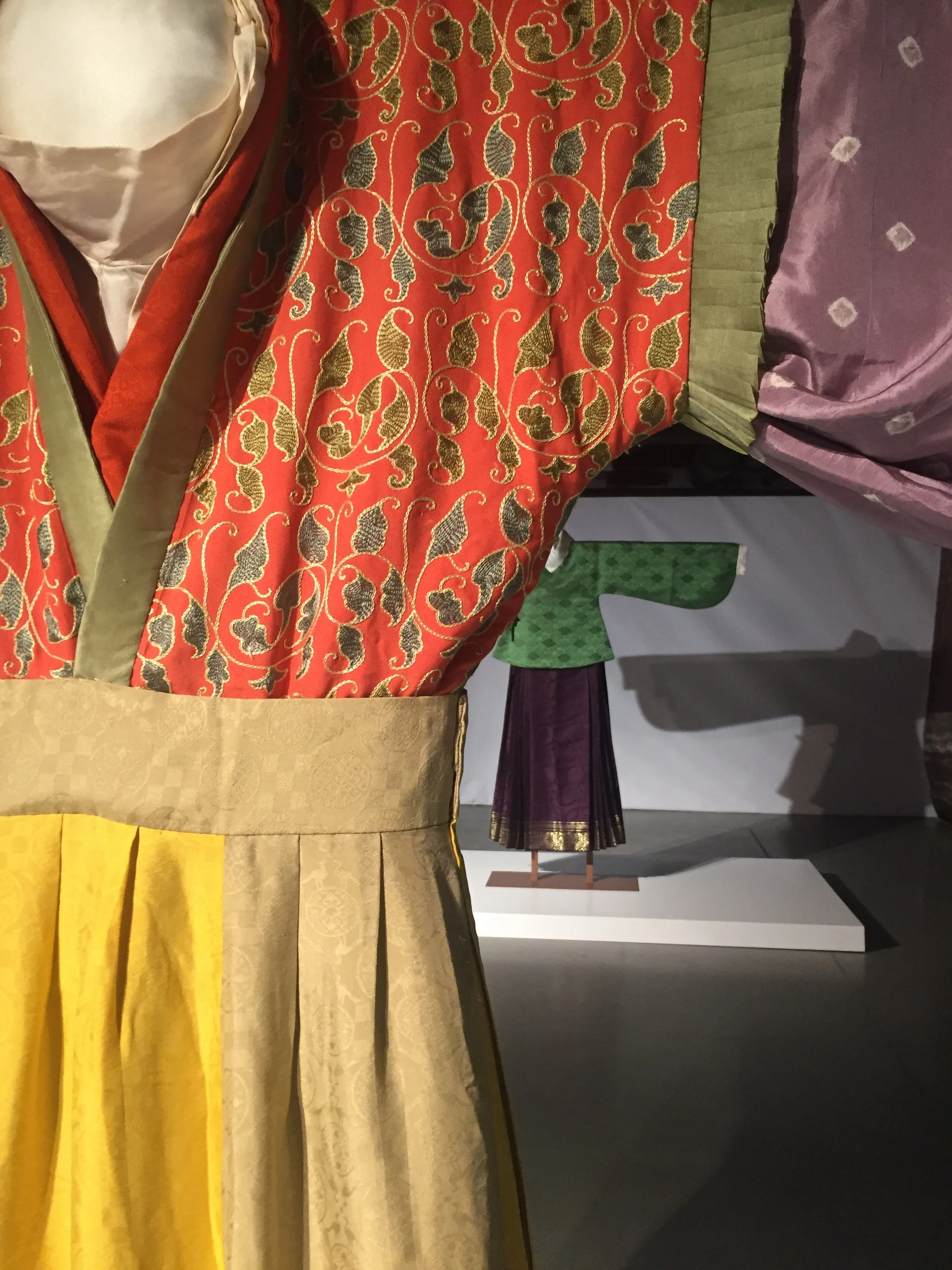In Praise of Silk, Fashion from China National Silk Museum Across Time
From 30th Sept to 2nd Dec 2017, Hong Kong Design Institute collaborated with the Chinese National Silk Museum, the largest silk museum in the world, to present a tribute to the renowned Chinese heritage fibre, mulberry silk. From replicas of historical costumes and weaving looms from the China National Silk Museum to contemporary fashion from the 1970s to the millennium, In Praise of Silk displayed the millennia-long evolving journey of China’s silk culture and its global impact. It was a rare opportunity for traditional silk work from ancient practice to be showcased in Hong Kong.
The China National Silk Museum is China’s key scientific research base for textile conservation. During the conservation process, information on fibres, dye, weave and the making of costumes is recorded and studied, where replicas become a way to learn more about how clothing was originally constructed. Replicas are also useful when the originals are too fragile to be exhibited. Some highlighted pieces are below.
Brocade Robe with Geese Holding Ribbon in Beaks, a replica of an excavated robe from Daiqintala, Inner Mongolia, Early Liao Dynasty, 10th Century - Traditional attire for a government official during the Liao dynasty consisted of an oversized cross-collared robe, wrapped to the left and with narrow sleeves. A special feature of Liao-style brocade was the use of seven-colour weft yarns, with a huge motif woven on complex drawlooms, which the museum has replicated here from an expertly crafted original robe. In all, 20 pairs of geese are depicted on the 10 metres of brocade; and ensuring all the birds are standing upright, evenly distributed and complete required a great deal of tailoring skill. The pattern of geese holding a ribbon in their beaks was used in the Tang Dynasty for officials above the third rank. This robe was probably made in the late Tang and passed on to Khitan officials in the Liao Dynasty.
Brocade Robe with Geese Holding Ribbon in Beaks, a replica of an excavated robe from Daiqintala, Inner Mongolia, Early Liao Dynasty, 10th Century. Photo by Sharon Tsang-de Lyster.
Lady’s Dress, replica, Wei and Jin Periods and Sixteen Kingdoms, 220-460AD - The Han style of dressmaking, featuring a yi for the upper body, and shang for the lower body, was popular throughout the Wei and Jin Periods, and Sixteen Kingdoms. The dress on display includes undergarments of a top and skirt, a second top, a long-sleeved tie-dyed purple top, a yellow damask skirt, and an embroidered cropped-sleeved wrap top. The cropped-sleeved wrap top is embroidered with chain stitch referencing excavated textiles from the period from the Loulan site, Xinjiang. The tie-dyed pattern on the purple long-sleeved top references Han Jin- period dye excavated from the Yingpan site, Xinjiang. The patterned silk with paired birds used for the yellow skirt is modelled on research from Niya site, Xinjiang.
Lady’s Dress, replica, Wei and Jin Periods and Sixteen Kingdoms, 220-460AD. Photo by Sharon Tsang-de Lyster.
Lady’s Dress, replica, Wei and Jin Periods and Sixteen Kingdoms, 220-460AD. Photo by Sharon Tsang-de Lyster.
Lady’s Embroidered Silk Gauze Robe, Late Qing Dynasty, 19th Century, HKDI Fashion Archive Collection - In the Qing Dynasty, the cross-collared garments that Chinese people had worn for millennia had to be discarded following the introduction of the side-buttoned Manchu style. The style for Manchu ladies was a long robe, as seen here, which later evolved into the qipao of today. The Qing style originated from robes made from skins, where a hold would be cut for the neck and a slash made for the collar. The decorative borders were originally intended to reinforce the edges of the robe but later became more ornamental The silk gauze used for the robe on display was an open weave, suitable for the summer; and the orchid pattern was one of the popular floral motifs of this period. The pattern represented elegance, noble character, and virtuosity, embroidered here using the counted stitch technique.
Lady’s Embroidered Silk Gauze Robe, Late Qing Dynasty, 19th Century, HKDI Fashion Archive Collection. Photo by Sharon Tsang-de Lyster.
Lady’s Embroidered Silk Gauze Robe, Late Qing Dynasty, 19th Century, HKDI Fashion Archive Collection. Photo by Sharon Tsang-de Lyster.
Silk Tapestry Loom and Weaving - Of all the traditional looms used for weaving silk in China, the silk tapestry loom is the simplest: a two-heddle loom for plain weaving. Chinese silk tapestries use weft-faced weaving, creating patterns by painstakingly manipulating numerous shuttles and coloured weft yarns in line with a drawing. Kesi is a form of pictorial Chinese silk tapestry weaving. It was previously used for court robes and also for translating Chinese paintings and calligraphy into tapestries. Today, kesi weaving is kept alive in the area around Suzhou in eastern China through the production of obi sashes for kimonos for the Japanese market. Contemporary couture designers also use kesi for one-of-a-kind creations.
To see the contemporary fashion items post-1978 with China's Open Door Policy or find out more about the exhibition, view here.














